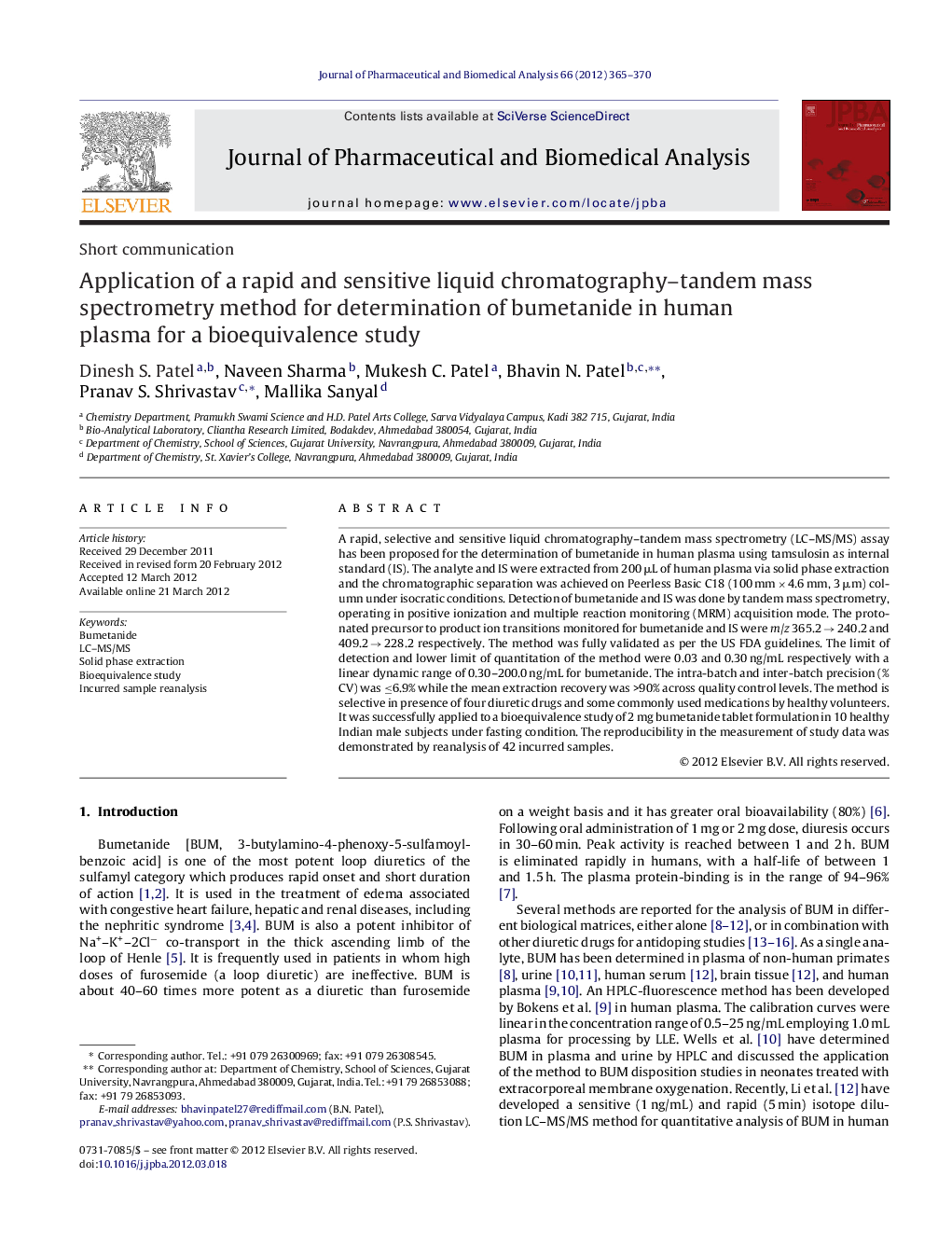| Article ID | Journal | Published Year | Pages | File Type |
|---|---|---|---|---|
| 1222204 | Journal of Pharmaceutical and Biomedical Analysis | 2012 | 6 Pages |
A rapid, selective and sensitive liquid chromatography–tandem mass spectrometry (LC–MS/MS) assay has been proposed for the determination of bumetanide in human plasma using tamsulosin as internal standard (IS). The analyte and IS were extracted from 200 μL of human plasma via solid phase extraction and the chromatographic separation was achieved on Peerless Basic C18 (100 mm × 4.6 mm, 3 μm) column under isocratic conditions. Detection of bumetanide and IS was done by tandem mass spectrometry, operating in positive ionization and multiple reaction monitoring (MRM) acquisition mode. The protonated precursor to product ion transitions monitored for bumetanide and IS were m/z 365.2 → 240.2 and 409.2 → 228.2 respectively. The method was fully validated as per the US FDA guidelines. The limit of detection and lower limit of quantitation of the method were 0.03 and 0.30 ng/mL respectively with a linear dynamic range of 0.30–200.0 ng/mL for bumetanide. The intra-batch and inter-batch precision (% CV) was ≤6.9% while the mean extraction recovery was >90% across quality control levels. The method is selective in presence of four diuretic drugs and some commonly used medications by healthy volunteers. It was successfully applied to a bioequivalence study of 2 mg bumetanide tablet formulation in 10 healthy Indian male subjects under fasting condition. The reproducibility in the measurement of study data was demonstrated by reanalysis of 42 incurred samples.
► Most sensitive LC–ESI-MS/MS method for bumetanide in human plasma. ► The method employs only 200 μL plasma for processing using solid phase extraction. ► Chromatography of 3.5 min is the shortest compared to all existing methods. ► Selective in presence of four diuretic drugs and commonly used drugs by subjects. ► Application through bioequivalence study in healthy volunteers and ISR study.
